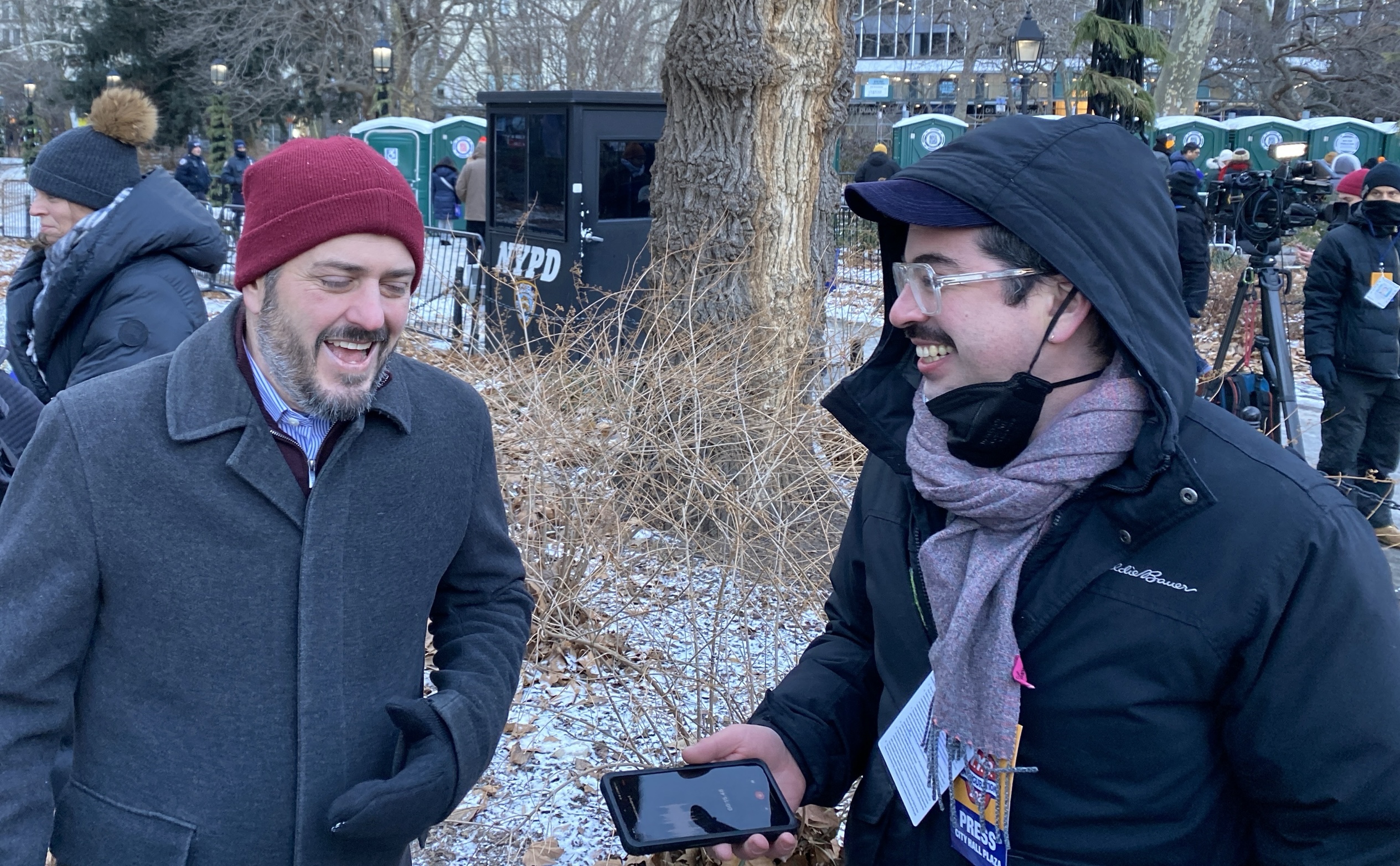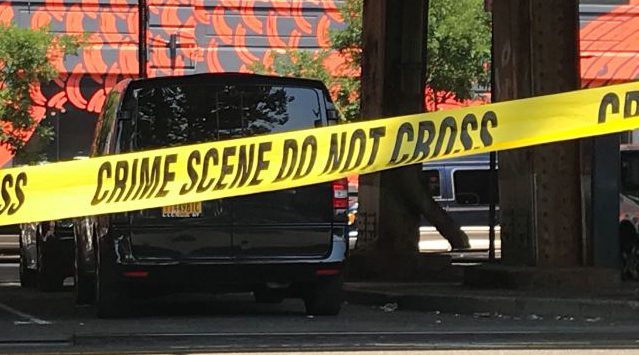If I’ve learned one thing from all the meetings about transportation I’ve covered, it’s this: There is no progress without a solution on funding.
Every conversation about infrastructure turns on the question of how to pay for it. As the power of the gas tax declines, can it be restored or replaced? Does the political will exist?
Friday's post-election debrief at the Bipartisan Policy Center was no exception. Judging by the first half of the forum, you’d think that the entire transportation program hangs in the balance of that one open question. And it might.
So let's start with that:
Will the 113th Congress solve the funding crisis?
Joshua Schank of the Eno Center for Transportation opened the session by saying it’s easy to be optimistic about the future when the recent past has been so dismal. All participants agreed that U.S. DOT needs to focus on finding a sustainable funding source for transportation. Last year, the House proposed a 33 percent cut to keep spending in line with transportation revenues; Pete Ruane, president and CEO of the American Road and Transportation Builders Association, said the potential cut could be as high as 57 percent in 2014 if Congress doesn’t create new revenue sources.
David Traynham, a policy analyst at Boeing, said the new Transportation Secretary (if there is one) should make that his or her “signature issue,” the way distracted driving is Ray LaHood’s signature issue.
Though many people believe that an eventual switch to a mileage-based funding system is inevitable (though still politically toxic), the gas tax is still the most obvious solution – a “no-brainer,” according to Jeff Shane, former undersecretary of transportation under President Bush. But no matter what happens with the gas tax, said Doug Foy, who ran Mitt Romney’s Office for Commonwealth Development in Massachusetts, the country needs to relax its prohibitions on tolling. Under current law, only new lanes can be tolled, and only in a handful of places. That’s a big problem to Foy and others who believe that maintaining existing infrastructure is a far more pressing mandate than building new capacity.
“Take a state like Rhode Island,” Foy said. “I-95 is falling into ruin. It is literally coming apart at the seams… Rhode Island can’t afford to rebuild that road in place, let alone make it any bigger. If that road is not tolled, it will not be rebuilt.” He said federal support is far too low to take it on.
Whether it’s through tolling, a VMT fee, or raising the gas tax, Foy said, people need to start thinking of paying for the transportation network like they would pay for a utility. He said he spent upwards of $2,000 last year for each of the three other major utility networks: cable/internet, phone, and gas/electric. Water and sewer service cost more than $1,000. What did he spend last year to keep the transportation network healthy? Not counting whatever he spent at the transit farebox, Foy said he spent $160 in gas taxes.
Are transit, biking, and walking still vulnerable?
Sources on the Hill have told Streetsblog their fear that if the Highway Trust Fund does slip into insolvency in 2014 without a real solution to shore it back up, there could be a renewed push to limit federal transportation spending to what the highway lobby calls "the core federal role" -- meaning roads only.
Will we see another offensive against transit? Janet Kavinoky, the infrastructure maven at the Chamber of Commerce, thinks it's actually unlikely, since that battle was fought in 2012, and transit won. “There was also a pretty strong rejection of taking transit out of the Highway Trust Fund,” she said. “A solid rejection of that.”
Still, she said, the Chamber and its allies “will continue to ask the question of what’s the core federal role and how you fit active transportation into that.” The insinuation is that investment in biking and walking -- which took the hardest hit in MAP-21 -- is “a local issue” and not “a core issue,” even though complete streets address national-level goals like safety and air quality.
Foy gave a determined defense of multi-modal investment. “I hope we’re not going back to a mode battle again,” he said. “The trucks trying to get through Providence, Rhode Island need people on those trains so there’s more room on the road for those trucks. We need all those modes to be supported.”
Is Ray LaHood really leaving U.S. DOT?
At first LaHood said he would leave in 2013, but he's backpedaled somewhat since. Speculation is alive and well about who could replace him if he really does go. “The way we think about who will take the leadership slot at DOT is very different from the way the administration will think of it,” cautioned Ryan Holeywell of Governing Magazine. “It’s not necessarily going to be someone who’s a transportation policy wonk.”
After all, to the administration, even LaHood’s main qualification for the post was that he was a Republican, and the White House was looking to cross party lines with at least one Cabinet post.
Is MAP-21 really a two-year bill?
It’s set to expire at the end of fiscal year 2014, but the recently-enacted national transportation bill will likely live on well past that date for two reasons.
First of all, said Janet Kavinoky, “It’s only a two-year bill because that’s all the money they could find.”
“That doesn’t mean the policy is going to change wholesale in two years,” she said. “If it does, we’re in a lot of trouble, because it’s going to take that two years to get everything implemented.”
The second reason the MAP-21 era could last a while is simply that it took three years to get the bill passed. Does anyone really imagine that the next one will sail through right on time, with no need for extensions? When was the last time that happened?
Will the next Congress bring better collaboration on infrastructure?
Rep. Earl Blumenauer used to say there were three parties in Congress: Democrats, Republicans, and the Transportation and Infrastructure Committee. But whatever reputation the committee had for bipartisan collaboration was destroyed these past two years, as John Mica shut Democrats out of every significant discussion.
Democrats are optimistic that Rep. Bill Shuster will be a different kind of chair. And many hope that his close relationship with leadership will mean that more can get done. Mica’s friction with House Speaker John Boehner kept transportation off the agenda for far too long.
Still, Holeywell noted that Shuster “will have the same trouble that Congressman Mica did in that he’ll still be beholden to all his GOP colleagues in the house.”
The GOP majority will be a hair smaller than it has been, and some hard-liners are out, but -- as you can see from the "fiscal cliff" negotiations -- that doesn’t necessarily mean the Republicans are coming back chastened and ready to concede anything.
It helps to have a president who cares about infrastructure. Jeff Shane, who worked in Bush’s U.S. DOT, said President Obama is “as articulate as any president I’ve ever heard” on the issue.” Still, that doesn’t necessarily translate into optimism over Obama’s updated $50 billion infrastructure proposal, which resurfaced on Friday. And even Obama disappeared into the wallpaper when it came time to actually do the work on expanding transportation revenue.
Is TIFIA doing what it needs to do?
Now capitalized at $750 million per year (a far cry from the $122 million it had been allocated in the past), the country’s “innovative” financing program has a ways to go before it’s really useful.
First of all, Kavinoky wants to see the word “innovative” banished from talks of TIFIA (even though it’s in the name: the Transportation Infrastructure Finance And Innovation Act).
“It’s been done in the energy sector, in the drinking water and waste water sector, and in real estate for years,” Kavinoky said. “No longer innovative. Project financing. Just financing.”
And what’s so innovative about encouraging more road-building anyway, especially when states have hundreds of billions of dollars worth of maintenance that’s going undone? That’s Foy’s big concern. Sure, you can make TIFIA bigger, he said, but “how relevant will it be and how useful can it be in repairing existing infrastructure and not just building new stuff?” The money to pay back the TIFIA loans needs to come from somewhere: tolling, user fees, taxes, value capture. What’s the revenue stream for repair? “That’s where the big bucks have to go,” Foy said.
(For more about the shortcomings of TIFIA, check out Streetsblog's story from July covering the lack of national goals attached to the program.)
Will TIGER survive?
TIGER grants pick up the slack from TIFIA in some ways. They’re grants, not loans, so they can support projects without a revenue stream. While TIFIA lends itself toward financing toll roads, TIGER historically has spent less than 30 percent of its funds on roads and bridges, with more than 40 percent going to transit and intercity rail.
MAP-21 missed the golden opportunity to authorize the program.
Why kill such a wildly popular program? “Pure politics,” said Pete Ruane. Many states and members of Congress don’t want the Obama administration deciding where the money goes. They think decisions are made best in the states, rather than by, in their words, "faceless Washington bureaucrats." And the opponents worry the administration distributes grants based on campaign strategy more than merit.
So far, the administration keeps finding money for TIGER, but without being authorized in a bill, the program’s days could be numbered.
How will the nation respond to climate change and extreme weather?
If anything good can come of the devastation of Superstorm Sandy, it’s a heightened awareness of the immediacy of climate change and its impacts.
Doug Foy guessed that in the end, the total bill for storm recovery will be $100 billion, with about half that paying for infrastructure. It was hard enough to find money to keep transportation spending at current levels with a little bump for inflation – where will $100 billion come from?
Foy worked with Mayor Bloomberg’s office on the effort to enact congestion pricing in 2008. “Part of the money would have been used to fortify transit system,” he said. “They knew those tunnels were exposed.”
Will federal recovery funding come with conditions for rebuilding more sustainably? As the country grapples with the prospect of 100-year storms every year or two, there are three choices, Foy said: Rebuild transportation infrastructure as it was, fortify it against increasing storm surges, or abandon it.






